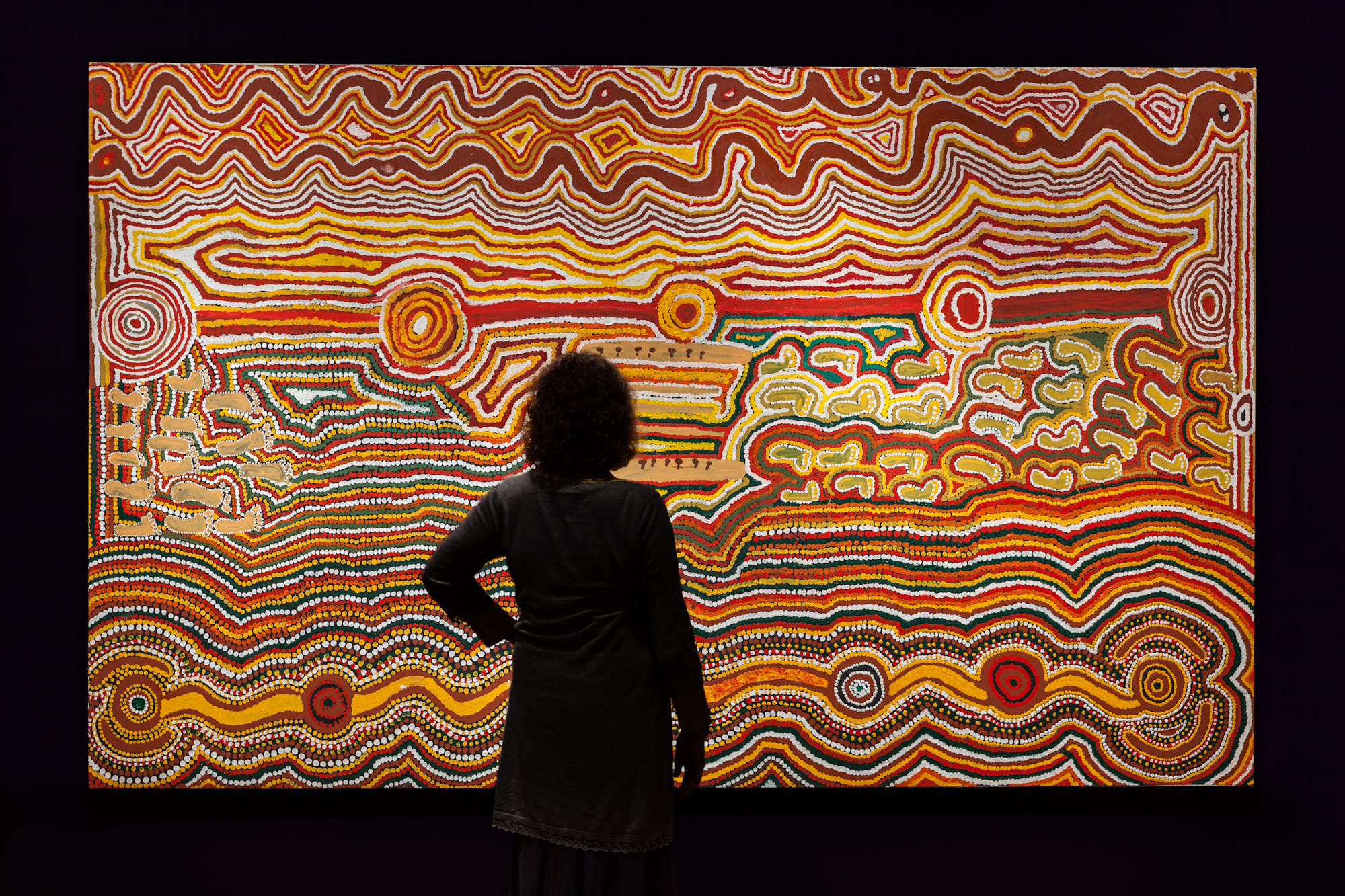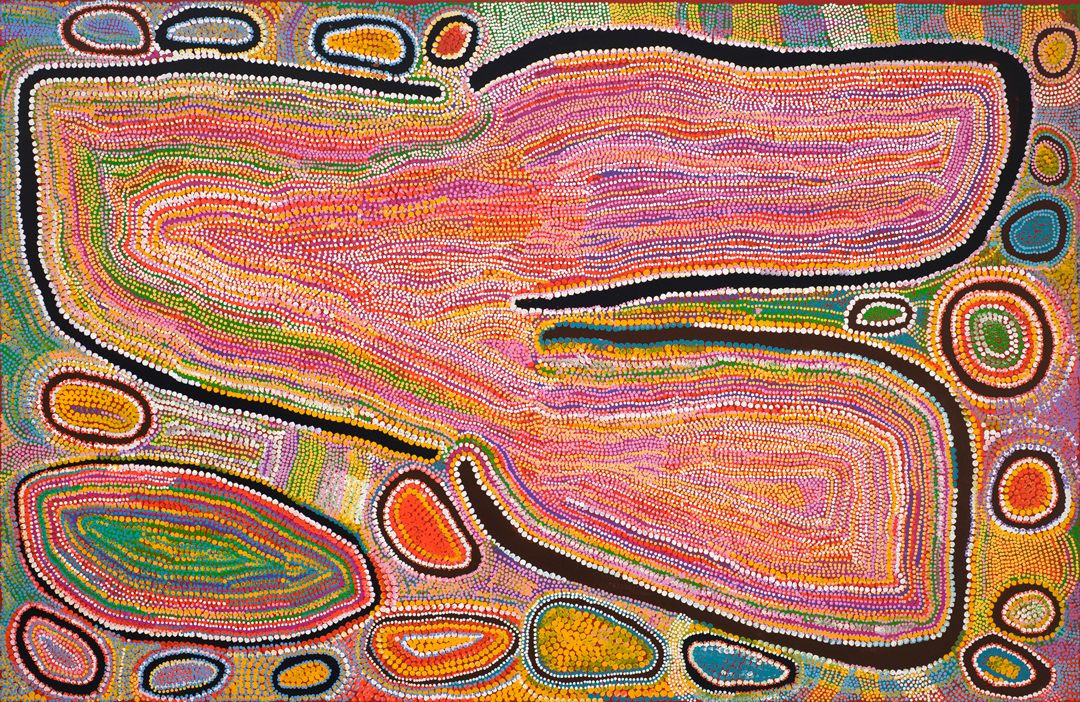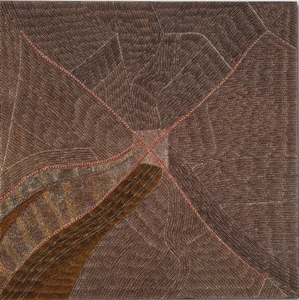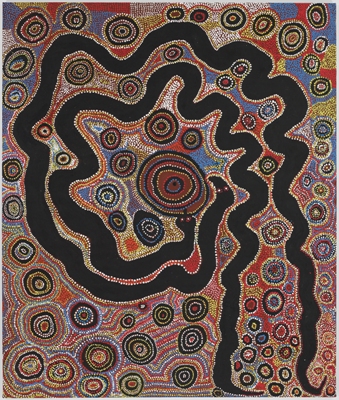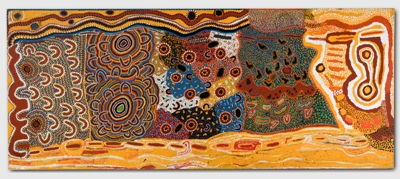Welcome Home, Ancestral Modern!
Ancestral Modern: Australian Aboriginal Art from the Kaplan-Levi Collection recently concluded a tour to four museums where it opened thousands of eyes to the visionary innovations of a new chapter of art history. When this exhibition first opened in 2012 in Seattle, one critic described it as:
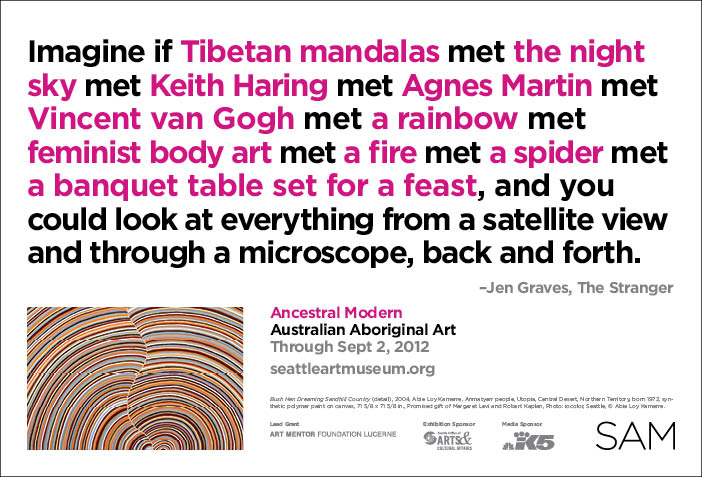
National and international visitors came to Seattle and paid attention to this gathering of art which led to a connection with the American Federation for the Arts through their board member, Kimerley Rorchach. The AFA took on the responsibility for finding other museums and organizing the logistics for traveling the exhibition. During three years, it was seen at the Frist Center for the Arts in Nashville, the Chazen Art Museum in Madison, the Blanton Museum of Art in Austin, and the Audain Museum in Whistler.
Amazingly enough, the entrance to the exhibition often focused on a painting that has the startling quality of a stop sign, by painter Ngilpirr Spider Snell, who is warning you not to get too close to a sacred body of water that is being guarded by a snake.
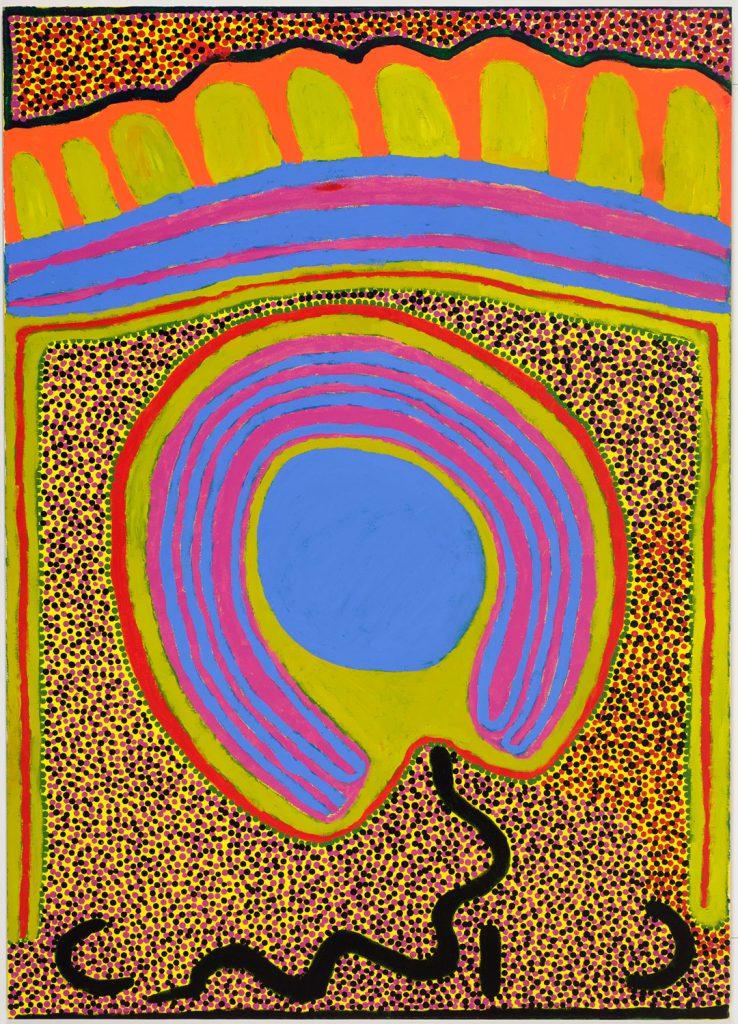
That warning leads into looking at dots, mazes and linear patterns that may not always be what they seem. In Australian Aboriginal art, dots can trace the journey of a creative ancestor.
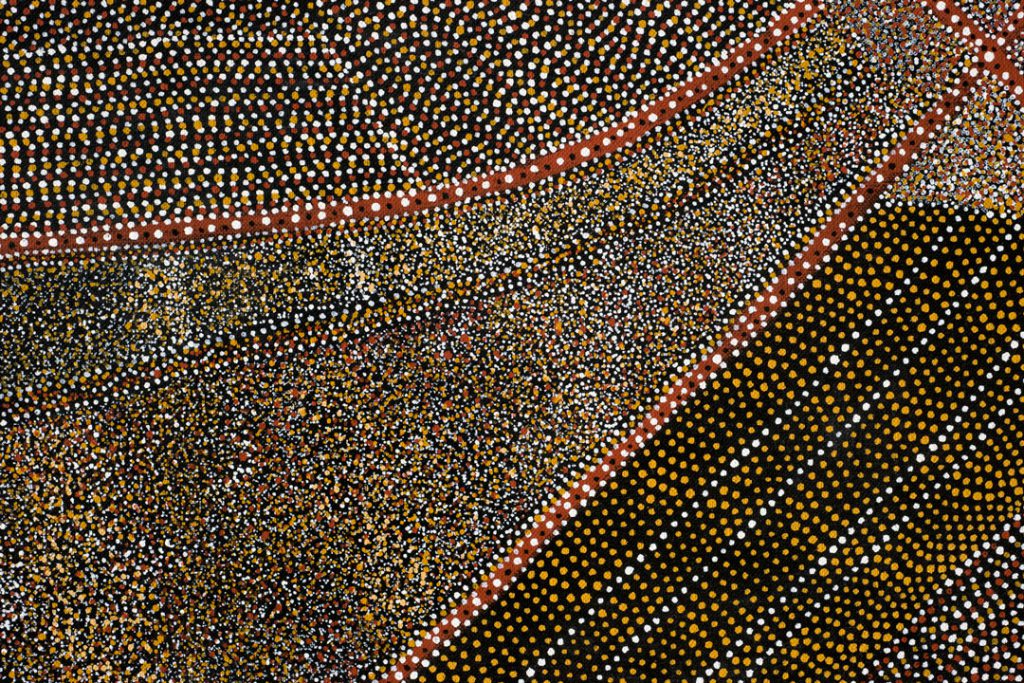
Or dots can punish a boy who has stolen an emu’s heart by turning him into a colorful whirlwind
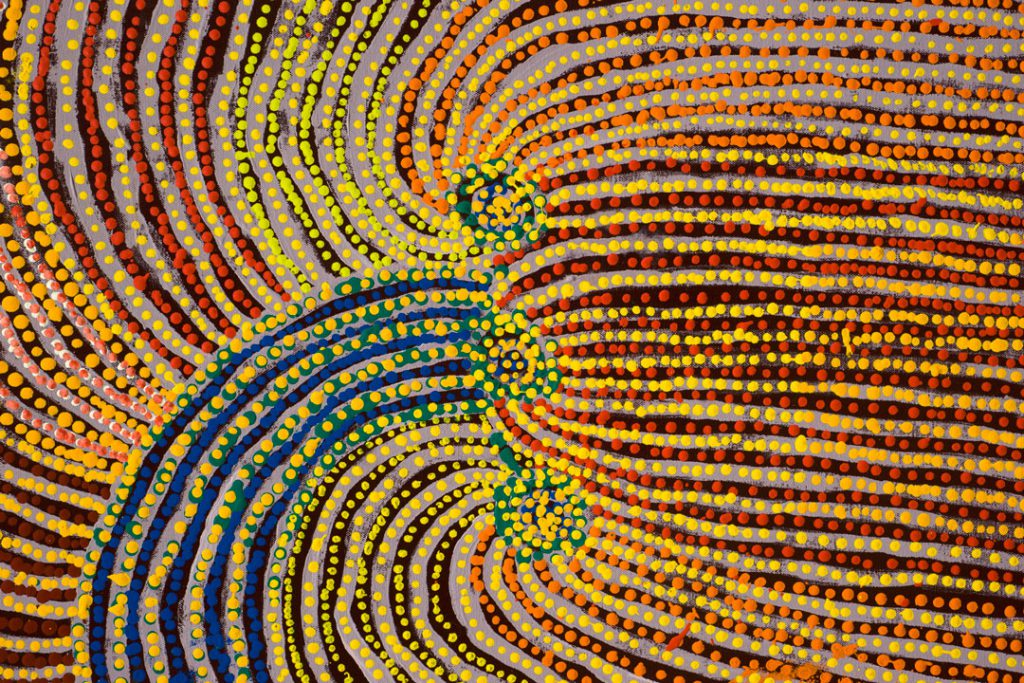
A maze can be a map of an artist’s homeland filled with sandhills.
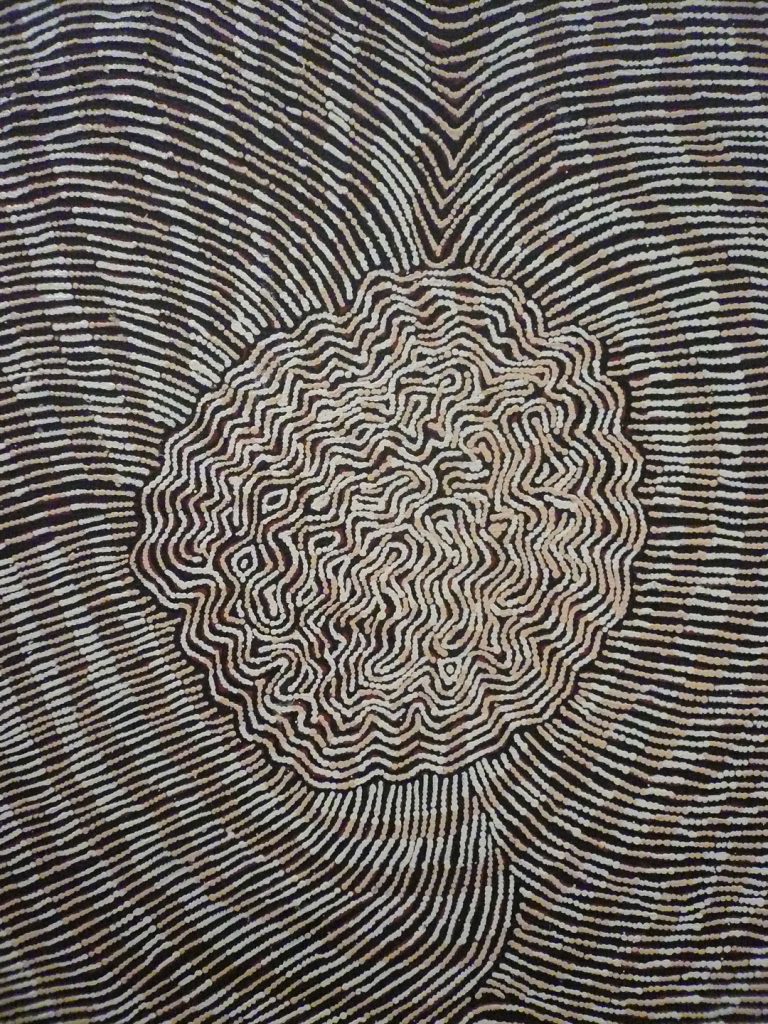
And linear dashes of paint may conjure up leaves full of medicinal strength blown across a windswept desert.
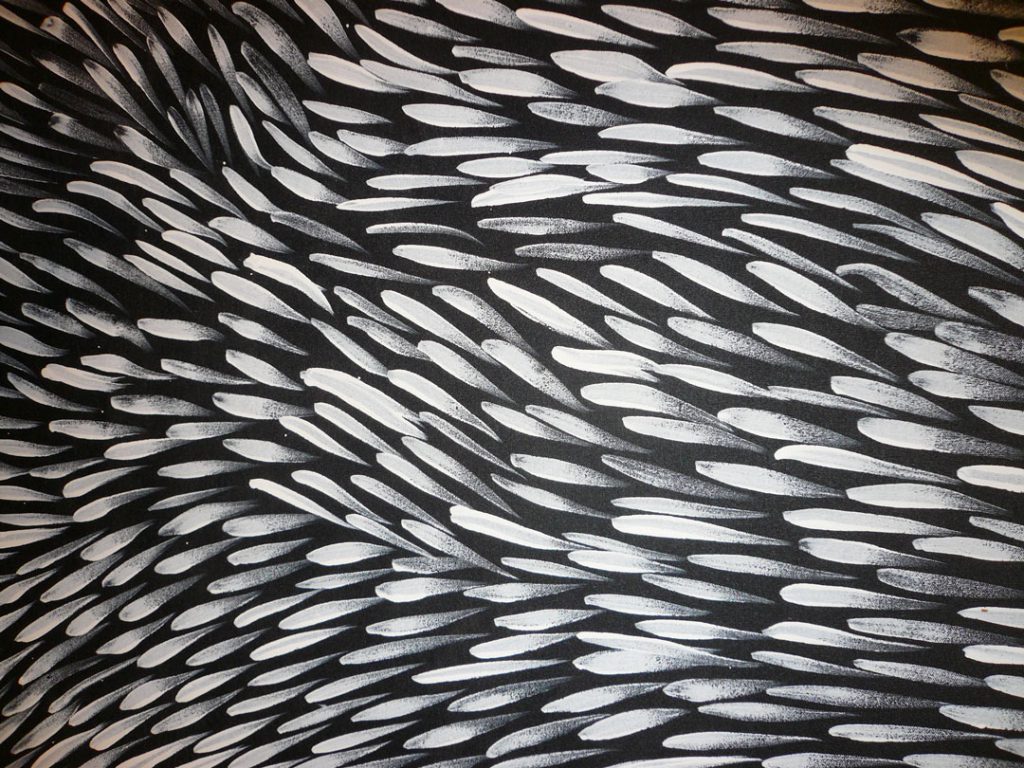
This art constantly offers many new visual experiences—peering underground to see yams grow; trekking over vast salt lakes; following the trail of a blue-tongued lizard or encountering a lightning-spitting serpent in swirling water. It is endowed with the vision of the world’s oldest living cultures whose artists have ushered in an indigenous renaissance since the 1970s. They focus our attention on the remarkable continent these communities have managed for centuries.
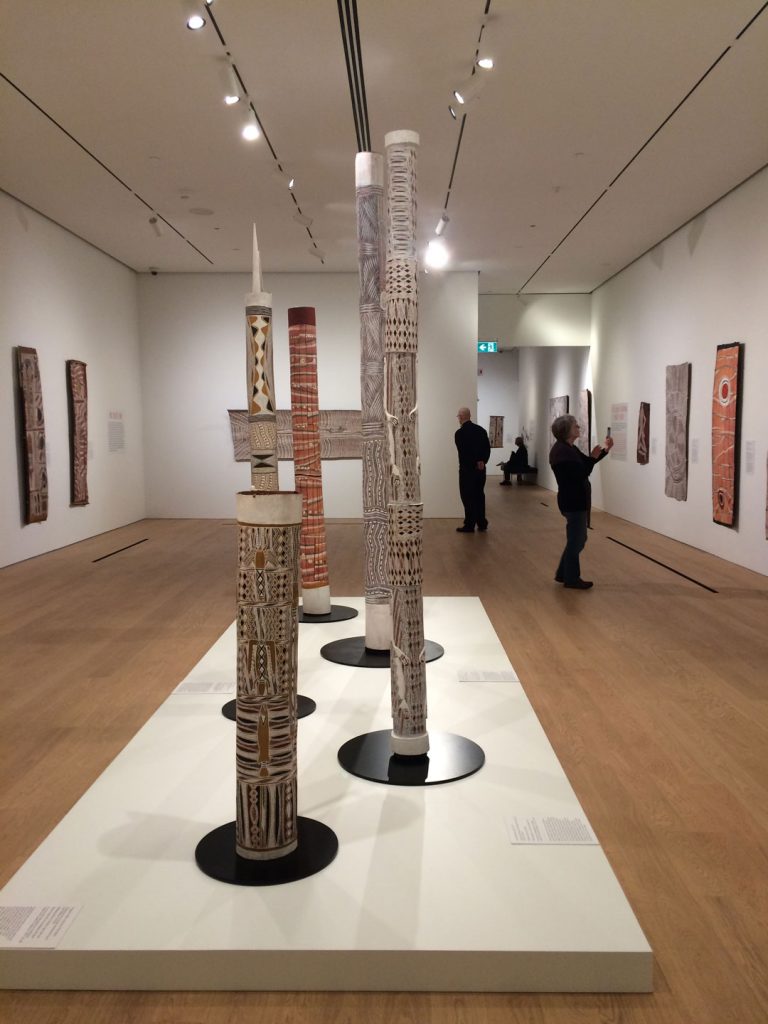
At each venue, the exhibition was accompanied by texts written by SAM, and designers put the art in interpretive themes also established by SAM. Throughout the tour, the couple whose collection was being featured made their way to the openings to speak with the press, educators, staffs, and members of each museum. Thanks to Robert Kaplan and Margaret Levi for making this extraordinary tour possible, and to all the artists whose creativity continues to challenge our eyes to adjust to what they consider significant.
– Pam McClusky, Curator of African and Oceanic Art
